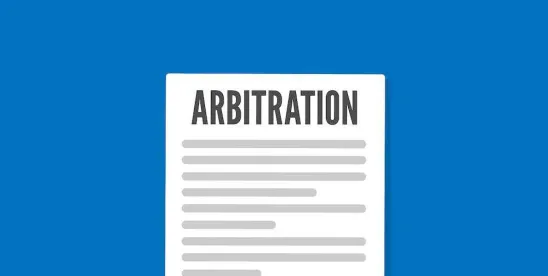A pair of recent California Court of Appeal decisions serve as yet another reminder to employers of the difficulties that they potentially face when enforcing arbitration agreements in California and, as a result, the importance of drafting clear, precise arbitration agreements. The first case, Hernandez v. Meridian Management Services, LLC, reiterated the importance of clearly identifying third-party beneficiaries of an arbitration agreement, and the second case, Murrey v. Superior Court, provides another example of how California courts scrutinize what may otherwise appear to be reasonable arbitration rules.
Hernandez – Identify Your Third-Party Beneficiaries
Parties that are not signatories to an arbitration agreement may still, in certain circumstances, enforce the agreement to compel arbitration when litigation arises. This situation often arises when an employee signs an arbitration agreement with their employer, and the agreement covers not only claims asserted against the employer but also claims asserted against the employer’s parent, subsidiaries, or related companies. But in order for a non-signatory to invoke an arbitration agreement as a third-party beneficiary, the agreement must clearly evidence the signing parties’ intent to cover that non-signing party. This was the hard lesson learned in Hernandez.
In Hernandez, the plaintiff was a customer service representative for Intelex. As part of her hiring process, she signed an arbitration agreement with Intelex. At the same time, she worked for several other entities related to Intelex. These other entities purportedly were jointly owned and operated, and allegedly shared payroll, human resources, legal, and risk management teams with Intelex. After her termination, the plaintiff brought employment claims against all the other entities but did not name Intelex as a defendant to the lawsuit in what was likely a strategic move by the plaintiff to avoid arbitration.
The other entities attempted to compel arbitration pursuant to the arbitration agreement that the plaintiff signed with Intelex. The other entities argued that, among other things, they could enforce Intelex’s arbitration agreement with the plaintiff as third-party beneficiaries. In doing so, the other entities highlighted the fact that the plaintiff alleged that all the companies, including Intelex, were commonly owned and essentially operated as a “single organism with no meaningful division between them except on paper.”
Both the trial and appellate courts disagreed. The appellate court explained the test for determining whether a party is a third-party beneficiary of an agreement as follows:
[E]xamine the express provisions of the contract at issue, as well as the relevant circumstances of the contract’s formation, to determine not only (1) whether the third party would benefit from the contract, but also (2) whether a motivating purpose of the contracting parties was to provide a benefit to the third party, and (3) whether permitting a third party to bring its own breach of contract action against a contracting party would be consistent with the objectives of the contract and the reasonable expectations of the contracting parties.
Here, notwithstanding all the companies purportedly being jointly owned and operated, the court concluded that the other entities were not identified in the arbitration agreement and there was no indication in the agreement that Intelex and the plaintiff sought to benefit the other entities. Further, while there was mention in the agreement that it would cover Intelex’s “agents,” the court found that the other entities were not acting as Intelex’s “agents.” Control is the essential ingredient for agency, the court explained, and there was an insufficient showing that Intelex controlled the actions of the other entities despite their purportedly sharing employees.
The Takeaway: Related companies – even those that are intimately intertwined – cannot simply assume that one company’s arbitration agreements can cover others. To ensure coverage of a non-signatory, the agreement should clearly identify the non-signatory and express a clear intent to cover the non-signatory. It is a simple point, but one that is often overlooked.
Murrey – Review Your Arbitration Rules from Any Perceived Unfairness
In Murrey, the appellate court reversed the grant of a motion to compel arbitration on the grounds of unconscionability. Some of the bases on which the appellate court found unconscionability are not surprising. For example, the court complained that the rules potentially impose discovery costs on an employee that the employee would not have incurred had the dispute been heard in court and excluded claims that were more likely to be asserted by the employer from arbitration. This is generally in line with settled California law on these issues. However, the appellate court went out of its way to go further and concluded that some arbitration rules and provisions, while reasonable on their face, could nevertheless result in some degree of unfairness to the employee.
First, notwithstanding the employer’s explanation that it uses a nationally recognized third party (the American Arbitration Association) to administer its arbitrations and thereby supplements its rules with the American Arbitration Association’s arbitration rules, the appellate court faulted the employer for not identifying the arbitration administrator in the agreement or its own rules at the outset. Rather, the employer retained the sole authority to select the third-party administrator (and therefore the corresponding rules). According to the court, this resulted in a surprise to the employee and could work to the employee’s disadvantage since the employer could choose the arbitration administrator based on what was advantageous to defending against the employee’s asserted claims.
Second, despite acknowledging that the arbitration rules gave the arbitrator discretion to grant the parties additional discovery depending “on the facts of the particular claim” and what the arbitrator “consider[ed] necessary for a full and fair exploration of the issue,” the appellate court took issue with the rules’ default discovery limitations. Specifically, the rules afforded each party three depositions, 20 interrogatories, 15 requests for documents, and 15 requests for admission. Although the rules gave the arbitrator discretion to grant additional discovery, according to the court this still fell short. The court stated that employment cases can be complex and the very fact that the default rules started from a point of limitation was enough to find some degree of unfairness to employees – even if an arbitrator has the discretion to allow additional discovery.
Third, despite noting that limitations on an arbitration hearing are “not per se unconscionable,” the appellate court concluded that the arbitration rule in this case, which limited the hearing to 16 hours and five witnesses per party, “clearly favor[ed]” the employer given that the plaintiff asserted ten causes of action that were “factually complicated and difficult to prove.”
Fourth, despite acknowledging that confidentiality in arbitration is “not per se unconscionable,” the appellate court found that confidentiality in the context of the plaintiff’s sexual harassment claims “serve[d] no purpose other than to benefit” the employer by “keeping [any] past findings [of sexual harassment] secret.” This, in the court’s view, “undermines an employee’s confidence in the fairness and honesty of the arbitration process” and potentially discourages employees from pursuing valid claims.
The Takeaway: Employers must anticipate that courts will place their arbitration agreements under a withering spotlight. Therefore, employers should regularly review their arbitration agreements to ensure that its provisions – even those that appear reasonable on their face – do not result in any perceived unfairness to employees.




 />i
/>i

